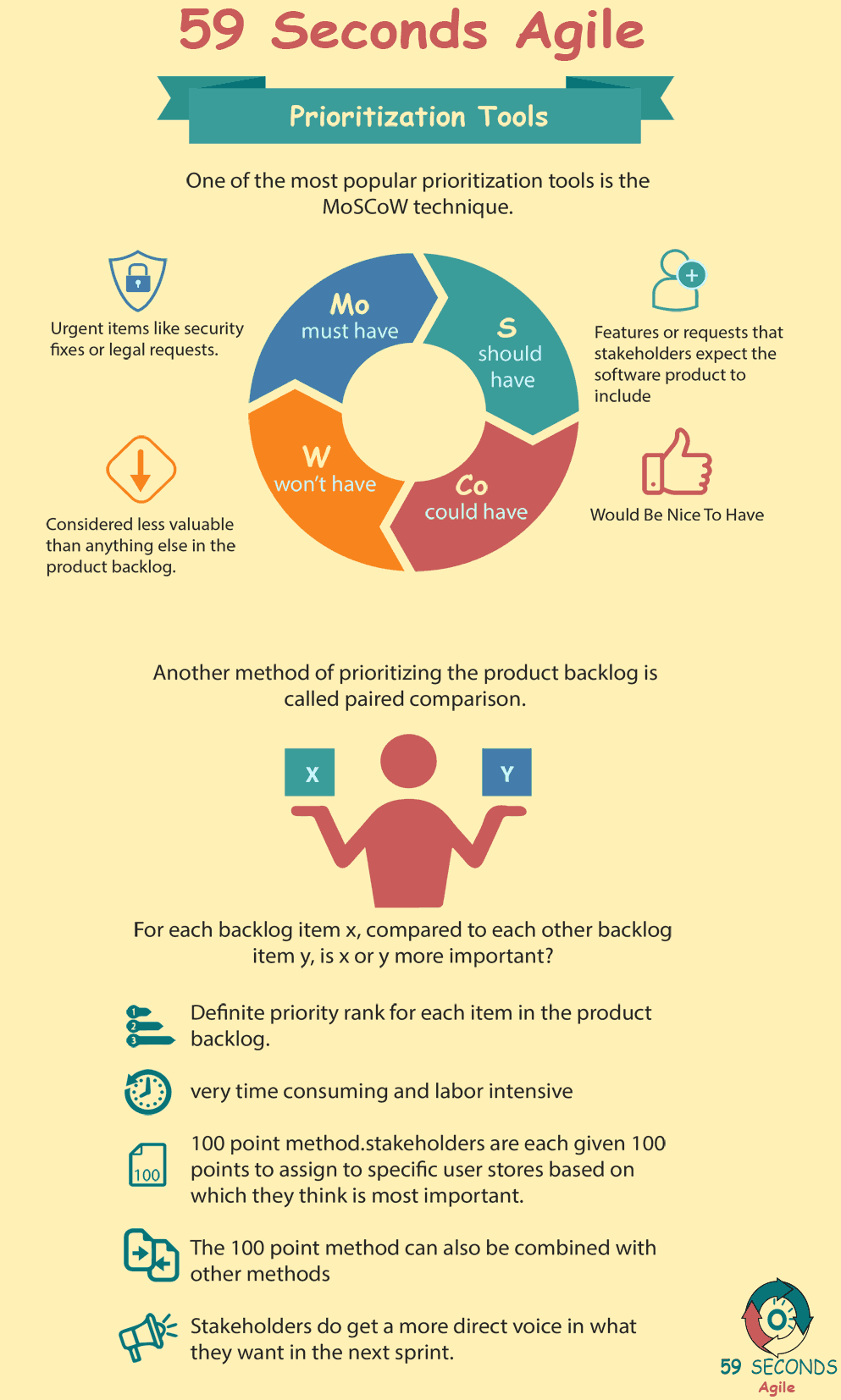Scrum Product Backlog Prioritisation
A 59 Seconds Agile Training Video
Continue to Part 3 Below
Prioritizing the Product Backlog
A 59 Seconds Agile Article
This article provides an ‘Introduction to Prioritizing the Product Backlog’ and looks to discuss what the Product Backlog is. It provides an overview of who is involved in the process of Prioritizing the Product Backlog.
Prioritizing the Product Backlog: Product Benefits
Adapting the way you approach the product development process could lead to massive benefits. One of the most important aspects of preparing for that development is to have a solid idea of what needs to be done at any given point in the process.
The simplest way to keep track of these tasks is by using a collective team to-do list. However, as we explored in the earlier example, throwing everything that needs to be done in one massive list leads to lots of wasted time, money, and effort.
You need some way to organize that to-do list so that it still represents the entirety of the project but presents a more focused approach to the development. This is where the product backlog comes in.
In agile project management, the product backlog exists as an overarching to-do list, listing every feature to be developed and the user stories that describe how the product will be used. One of the most important aspects of the product backlog is that each of the tasks are prioritized based on value.
Let’s take a look at what considerations the product owner goes through when prioritizing the product backlog. These include risk, reward, need, and dependencies.
Continue Reading —> Next
Prioritizing the Product Backlog
A 59 Seconds Agile Video Animation
Continue Reading —> Next
User Stories Applied
A 59 Seconds Agile Book Review
User Stories Applied by Mike Cohn is one of our favourite books on Agile User Stories. The book starts with an overview into user stories, and details what a user story is and the different aspects of them. He then discusses how to go about writing a user story, and provides details of the INVEST criteria that can be used to determine if the story is meeting all of its objectives. Next Mike gives an in depth discussion of who user stories are written for and where to begin when gathering the details for them. The book then discusses acceptance testing user stories, including how to go about specifying these criteria and the responsibilities of the development team and customers during this process.
Continue Reading —> Next
Prioritizing the Product Backlog
A 59 Seconds Agile Infographic

Continue Reading —> Next
Agile Scrum Master Training Course
Our Favourite Agile Books
We found these books great for finding out more information on Agile Scrum:
Continue Reading —> Next


